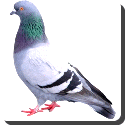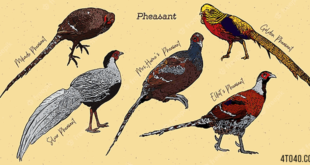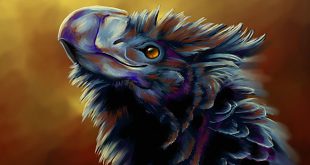 Dove — Pigeons and doves constitute the family Columbidae within the order Columbiformes, which include some 300 species of near passerine birds. In general parlance the terms “dove” and “pigeon” are used somewhat interchangeably. In ornithological practice, there is a tendency for “dove” to be used for smaller species and “pigeon” for larger ones, but this is in no way consistently applied, and historically the common names for these birds involve a great deal of variation between the term “dove” and “pigeon.” This family occurs worldwide, but the greatest variety is in the Indomalaya and Australasia eco zones. The young doves and pigeons are called “squabs.”
Dove — Pigeons and doves constitute the family Columbidae within the order Columbiformes, which include some 300 species of near passerine birds. In general parlance the terms “dove” and “pigeon” are used somewhat interchangeably. In ornithological practice, there is a tendency for “dove” to be used for smaller species and “pigeon” for larger ones, but this is in no way consistently applied, and historically the common names for these birds involve a great deal of variation between the term “dove” and “pigeon.” This family occurs worldwide, but the greatest variety is in the Indomalaya and Australasia eco zones. The young doves and pigeons are called “squabs.”
Pigeons and doves are stout-bodied birds with short necks and short slender bills with a fleshy cere. The species commonly referred to just as the “pigeon” is the feral Rock Pigeon, common in many cities.
Their usually flimsy nests are made of sticks, and the two white eggs are incubated by both sexes. Doves feed on seeds, fruit and plants. Unlike most other birds (but see flamingo), the doves and pigeons produce “crop milk,” which is secreted by a sloughing of fluid-filled cells from the lining of the crop. Both sexes produce this highly nutritious substance to feed to the young.
This family is a highly coherent group with no members showing obvious links with other bird families, or vice versa. The dodo and solitaires are clearly related, as discussed below, but equally lacking in obvious links with other bird families. The limited fossil record also consists only of unequivocal Columbidae species. Links to the sand grouse and parrots have been suggested, but resemblances to the first group are due to convergent evolution and the second depend on the parrot-like features of the Tooth-billed Pigeon. However, the distinctive features of that bird seem to have arisen from its specialized diet rather than a real relationship to the parrots.
 Kids Portal For Parents India Kids Network
Kids Portal For Parents India Kids Network




